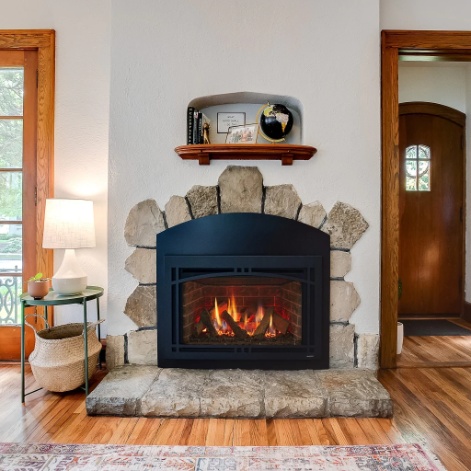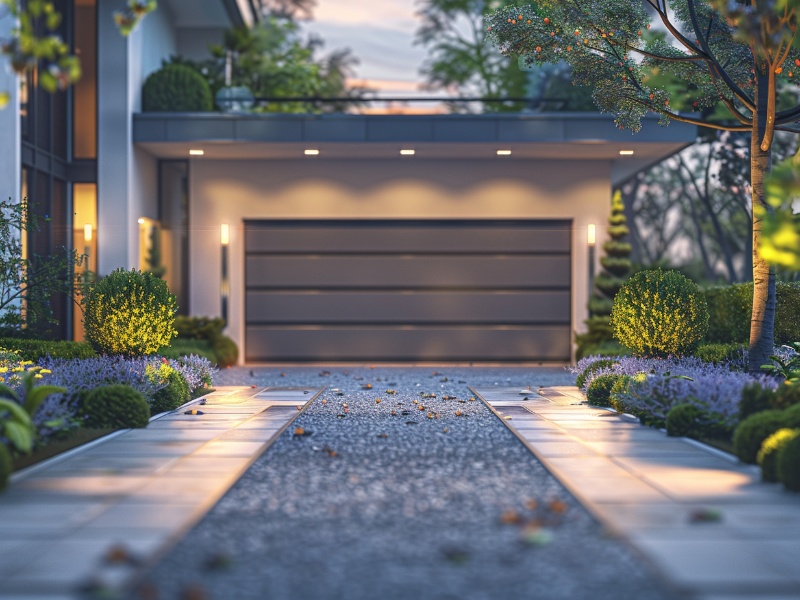Table of Contents
When painting your garage doors, choosing the right paint finish is crucial for achieving a professional and long-lasting result.
We explore the different types of paint finishes available, including flat, eggshell, satin, semi-gloss, and gloss finishes.
We also discuss key factors to consider when selecting a paint finish for garage doors, such as durability, weather resistance, gloss retention, and ease of maintenance.
Find the best paint finishes for garage doors and get tips on how to paint your garage doors with the perfect finish to give them a fresh and polished look.
What Is The Best Paint Finish For Garage Doors?
Selecting the best paint finish for your garage doors is crucial to enhancing both the aesthetics and durability of your property.
The right paint finish not only enhances the appearance of your garage doors but also plays a vital role in protecting them from various environmental elements. Choosing between gloss, matte, or satin finishes can significantly impact the overall curb appeal of your home. A durable paint finish can safeguard your garage doors from rust, corrosion, and fading due to sunlight exposure, thus extending their lifespan.
This attention to detail can substantially increase the value of your property by creating a polished and well-maintained exterior.
Types Of Paint Finishes
Understanding the different types of paint finishes is essential when considering a garage door makeover.
- From glossy finishes that reflect light beautifully to matte finishes that offer a more subtle and sophisticated appearance, each type of paint finish brings its unique characteristics to the table.
- Satin finishes fall somewhere in between, providing a smooth, velvety look that is both durable and easy to clean.
- When it comes to applications, metallic finishes add a touch of luxury, while acrylic finishes offer versatility and quick drying times.
- Enamel finishes, on the other hand, provide a glossy and durable surface perfect for high-traffic areas.
Flat Finish
A flat finish paint is known for its smooth and non-reflective surface, making it ideal for garage doors that require a subtle and understated color tone.
This type of paint comes in a variety of color options, ranging from soft whites to gentle grays, providing a harmonious selection for those seeking a muted appearance.
When considering a flat finish for garage doors, one must take into account the surface texture, as it can enhance the overall effect of the paint. The matte nature of flat finish paint helps in concealing surface imperfections, making it a suitable choice for garage doors that prefer a more subdued aesthetic.
Eggshell Finish
Eggshell finish paint offers a low sheen that provides a hint of gloss, creating a warm and inviting look for garage doors.
The beauty of eggshell paint lies in its versatility when it comes to colors. It can be easily customized to match any aesthetic, from bold and vibrant hues to subtle earth tones.
Its durability makes it a practical choice for garage doors, ensuring they can withstand the elements and everyday wear and tear. Proper preparation of the surface is crucial before applying eggshell paint to ensure a smooth and long-lasting finish. Its application is relatively straightforward, making it accessible for both DIY enthusiasts and professional painters.
Satin Finish
Satin finish paint strikes a balance between gloss and matte, offering moderate sheen and excellent protection for garage doors against the elements.
This type of paint not only enhances the appearance of your garage door but also provides a durable shield against dust, dirt, and moisture. The protective qualities of satin finish paint extend to shielding the surface from harsh UV rays, preventing color fading and deterioration over time. With its longevity and resistance to various weather conditions, satin finish paint is a cost-effective solution for maintaining the aesthetic appeal of your garage door.
This paint option comes in a wide range of colors, allowing you to customize and improve the overall look of your home exterior effortlessly.
Semi-gloss Finish
Semi-gloss finish paint provides a subtle shine and extensive coverage, making it a popular choice for garage doors that require a durable and attractive finish.
This type of paint is known for its excellent color retention abilities, keeping surfaces vibrant and fresh for longer periods. When applied over a properly primed surface, semi-gloss paint forms a robust protective coat that resists stains and can be easily cleaned. Its quick drying time is advantageous, allowing for faster completion of projects. The sheen of semi-gloss finish adds a touch of elegance to surfaces while also making them more resistant to moisture and humidity, making it ideal for high-traffic areas like kitchen cabinets.
Gloss Finish
Gloss finish paint offers a high sheen that enhances the visual appeal of garage doors, providing a sleek and polished look that boosts curb appeal.
This type of paint not only adds value to the property but also serves as a cost-effective way to elevate its overall aesthetic. With its smooth and reflective finish, gloss paint can make surfaces appear more vibrant and inviting, catching the eye of passersby. The protective nature of gloss finish paint helps shield surfaces from elements like UV rays, moisture, and dirt, thereby extending the longevity of the exterior surfaces and reducing maintenance costs over time.
Factors To Consider When Choosing A Paint Finish For Garage Doors
Several crucial factors should influence your decision when selecting a paint finish for garage doors, including durability, weather resistance, and ease of maintenance.
Enhancement of the garage door’s exterior not only adds aesthetic value but also plays a vital role in protecting the surface from harsh conditions. The right paint finish can resist moisture, UV rays, and other environmental factors, prolonging the lifespan of the door and reducing the need for frequent touch-ups. By choosing a durable finish that requires minimal upkeep, homeowners can enjoy a beautiful and well-protected garage door that can withstand the elements for years to come.
Durability
The durability of a paint finish is paramount for garage doors, ensuring long-lasting protection against various environmental factors.
The ability of a high-quality paint finish to withstand the elements plays a crucial role in safeguarding garage doors from weathering and corrosion. In addition to aesthetic appeal, durability in paint finishes ensures that the doors maintain their structural integrity over time. By withstanding harsh sunlight, rain, and extreme temperatures, these finishes protect the underlying material, prolonging the lifespan of garage doors and reducing maintenance costs. Investing in durable paint finishes not only enhances the visual appeal of doors but also contributes to their longevity and overall performance.
Weather Resistance
Opting for a paint finish with excellent weather resistance is essential to maintain the curb appeal of your garage doors in various climatic conditions.
Weather-resistant paint finishes not only enhance the appearance of your garage doors but also provide long-lasting protection. These finishes are specifically designed to withstand harsh conditions such as rain, snow, UV rays, and extreme temperatures. By investing in high-quality weather-resistant paint, you can ensure that your garage doors remain looking fresh and appealing for years to come, without the need for frequent repainting. The durability of these paint finishes helps in preserving the structural integrity of the doors, making them a worthwhile investment for any homeowner.
Gloss Retention
Paint finishes that retain gloss over time can significantly improve the overall appearance and value of garage doors, ensuring a long-lasting aesthetic enhancement.
This is particularly important for maintaining the curb appeal of your property. The way your garage doors look plays a crucial role in the overall look of your home exterior. A well-maintained, glossy finish not only adds to the visual appeal but also reflects a sense of pride in your property.
It creates a positive impression on visitors and potential buyers, ultimately boosting the property’s value. Investing in paint finishes with excellent gloss retention can transform the style of your home, giving it a fresh and polished appearance that lasts for years to come.
Ease Of Maintenance
Choosing a paint finish that requires minimal maintenance can add value to your property by reducing upkeep costs and preserving the finish’s appearance.
Low-maintenance paint finishes not only enhance your property’s curb appeal but also contribute to a boosted overall aesthetic. With proper upkeep, such finishes can ensure that your property maintains its allure for years to come, thus leading to a significant improvement in its long-term cost-effectiveness. This strategic investment not only saves you money in the short term by reducing maintenance expenses but also increases the value of your property in the eyes of potential buyers or renters.
What Type Of Paint Finish Is Best For Garage Doors?
Professional recommendations often lean towards semi-gloss, gloss, or satin finishes as the best choices for garage doors due to their durability, aesthetic appeal, and weather resistance.
- Semi-gloss finishes are a popular choice for garage doors as they strike a balance between glossy and matte, providing a sheen that can help highlight architectural details.
- Gloss finishes, on the other hand, offer a high-quality shine that can make the garage door stand out and enhance the overall curb appeal of the property.
- Satin finishes, with their subtle sheen, are known for being easy to clean and maintain, making them a practical choice for long-term property enhancement.
Whichever finisher you opt for, ensuring a professional application is key to achieving a flawless look that lasts.
Semi-gloss Finish
Semi-gloss finish is a versatile option that DIY enthusiasts often choose for garage doors, offering a balance between durability and ease of application.
One of the key advantages of opting for a semi-gloss finish in DIY projects is its ability to achieve the desired look with minimal effort. Whether you are aiming for a sleek, modern appearance or a classic finish, this type of topcoat can effortlessly enhance the overall aesthetic of your garage doors. The selection process is simplified, as semi-gloss finishes are widely available in a variety of colors, allowing you to easily find the perfect match for your project. When it comes to application methods, the smooth consistency of semi-gloss paints makes them user-friendly, even for those new to DIY tasks.
Gloss Finish
Many professionals recommend gloss finish for garage doors due to its high sheen, UV protection, and ability to provide long-lasting protection against the elements.
The glossy surface not only adds a touch of elegance to the exterior of the home but also acts as a shield against harsh weather conditions, preventing rust and corrosion. This outdoor durability is crucial in maintaining the aesthetic appeal of the garage door for years to come. The UV resistance of a gloss finish helps to prevent color fading, ensuring that your door looks vibrant and fresh. When seeking expert advice on choosing a suitable finish, opting for gloss can significantly enhance the curb appeal of your property.
Satin Finish
Satin finish paint is a popular choice for garage doors due to its durability, color selection, and ability to provide long-term weather resistance.
The satin finish not only adds a touch of elegance to the overall look of the garage door, but it also effectively protects the surface from harsh weather conditions and UV rays. This type of paint is a smart long-term investment as it requires minimal maintenance and touch-ups, ensuring that the door stays looking fresh and vibrant for years to come. With a wide range of color options available, homeowners can easily find a shade that complements their exterior decor, enhancing the aesthetic appeal of their property.
How To Paint Garage Doors With The Best Finish
Achieving the best finish for your garage doors involves proper surface preparation, selecting the right paint type, and applying the paint with precision to ensure long-lasting protection and aesthetic appeal.
Start by thoroughly cleaning the garage door surface to remove any dirt, grease, or flaking paint, as these can affect the new paint’s adhesion. Repair any cracks or dents with a suitable filler and sand the entire surface to create a smooth base. When choosing a paint, opt for a high-quality exterior paint that is specifically formulated to be resistant to chipping, cracking, and fading for enhanced durability. Apply the paint evenly using a paint sprayer or brush, following the manufacturer’s recommendations for best results.
Preparing The Garage Door
Properly preparing the garage door surface is essential before applying any paint finish, ensuring a smooth and durable result that can withstand environmental elements.
Surface preparation is the key to achieving a professional-looking paint job that not only enhances the aesthetic appeal but also provides long-lasting protection. To ensure durability, start by thoroughly cleaning the surface to remove any dirt, grease, or old paint.
Next, repair any cracks or imperfections using suitable fillers. Sand the surface to create a uniform texture for better paint adhesion. Prime the surface to seal it, enhancing the finish and safeguarding it against moisture and UV rays.
These steps are crucial for a flawless and resilient garage door finish.
Choosing The Right Paint
Selecting the appropriate paint type and coat for your garage doors is crucial to achieving the desired finish, as different formulations offer varying levels of protection and coverage.
When deciding on the right paint for your garage doors, it’s important to consider factors such as the drying time and finish sheen. Opting for a paint that can enhance weather resistance and withstand harsh conditions will ensure a longer-lasting and durable coat. Choosing a finish that complements the overall aesthetics of your home can significantly boost curb appeal.
By carefully evaluating these aspects, you can select a paint type and coat that not only beautifies your garage doors but also provides superior protection against external elements.
Applying The Paint
Properly applying the selected paint finish to your garage doors is essential for ensuring longevity, protection, and visual appeal that lasts through changing seasons.
To achieve a successful paint job, it is crucial to prep the surface by cleaning it thoroughly and allowing it to dry completely beforehand. Once the surface is ready, use a high-quality paintbrush or roller to apply the paint in smooth, even strokes. Pay attention to achieving a uniform coat to provide protection and enhance durability. Allow each coat to dry as per the manufacturer’s instructions before applying the next layer. This will ensure that the finish on your garage doors is able to withstand elements and maintain its aesthetic appeal for an extended period.
Frequently Asked Questions
1. What is the best paint finish for garage doors?
Selecting the best paint finish for your garage doors is crucial to enhancing both the aesthetics and durability of your property.
2. What types of paint finishes are available for garage doors?
From glossy finishes that reflect light beautifully to matte finishes that offer a more subtle and sophisticated appearance, each type of paint finish brings its unique characteristics to the table.
3. What are the characteristics of a flat finish paint?
A flat finish paint is known for its smooth and non-reflective surface, making it ideal for garage doors that require a subtle and understated color tone.
4. What advantages does a semi-gloss finish offer for garage doors?
Semi-gloss finish paint provides a subtle shine and extensive coverage, making it a popular choice for garage doors that require a durable and attractive finish.
5. How can homeowners ensure long-lasting protection and aesthetic appeal when painting their garage doors?
Achieving the best finish for your garage doors involves proper surface preparation, selecting the right paint type, and applying the paint with precision to ensure long-lasting protection and aesthetic appeal.
6. Which factors should homeowners consider when choosing a paint finish for garage doors?
Several crucial factors should influence your decision when selecting a paint finish for garage doors, including durability, weather resistance, and ease of maintenance.
Latest Articles

What Is An NG (Natural Gas) Indicator And Why You Need It For Your Fireplace
Table of Contents1 Understanding Natural Gas Fireplaces2 What is an NG Indicator?3 Importance of NG Indicators for Safety4 Types of NG Indicators5 Installation and Maintenance of NG Indicators6 Signs of a Faulty NG Indicator7 Frequently Asked Questions Natural gas fireplaces are a favored option among numerous homeowners due to their convenience and effectiveness. But, what is an NG (Natural Gas) indicator and why you need it for your fireplace? It is imperative to comprehend how they function and the significance of having an NG (Natural Gas) indicator for safety purposes. This article delves into the definition and significance of NG indicators. We will discuss the potential hazards associated with the absence of one and the various types of indicators accessible. Also, we will discuss installation and maintenance recommendations, and methods to recognize and rectify issues with malfunctioning indicators. Stay well-informed and ensure the safety of your home by referring to this exhaustive guide. Understanding Natural Gas Fireplaces Natural gas fireplaces serve as an efficient and convenient heating option for numerous households. They utilize natural gas as a fuel source to deliver consistent warmth and ambiance. How They Work and Why They Need NG Indicators The operation of natural gas fireplaces involves igniting natural gas to generate heat. This process requires diligent monitoring to ensure both safety and efficiency, a task facilitated by the use of NG indicators. NG indicators play a critical role in detecting potential gas leaks. They enable residents to promptly address and mitigate any associated hazards. Through continuous monitoring of gas levels and providing timely warnings and alerts, NG indicators uphold a secure indoor environment. It is imperative to ensure that these indicators function properly to facilitate the effective operation of natural gas fireplaces. This helps mitigate the inherent risks linked to gas leaks. What is an NG Indicator? An NG indicator is a specialized device equipped with advanced sensors and technology. It is specifically designed to detect natural gas leaks and monitor gas pressure in appliances, such as fireplaces. Definition and Purpose The NG indicator functions as a detector that monitors gas appliances for potential leaks. It provides essential functionality to ensure safety in households utilizing natural gas. These detectors play a crucial role in protecting residences by notifying occupants of dangerous gas leaks long before they escalate into perilous situations. Through continuous monitoring of gas levels in the vicinity, NG indicators offer an additional layer of protection. This is particularly important in properties that rely on gas-operated fireplaces or stoves. These devices not only help avert potential disasters but also enhance the overall peace of mind of homeowners. They assure them that their living spaces are equipped with reliable safety features. Importance of NG Indicators for Safety Natural gas indicators are essential for maintaining safety in households equipped with natural gas appliances. These devices serve as a proactive measure to promptly detect gas leaks. This offers homeowners a sense of security and assurance. Potential Dangers of Not Having an NG Indicator The absence of an NG indicator in residences equipped with natural gas appliances can pose significant hazards. This includes the risk of undetected gas leaks , carbon monoxide poisoning , and pilot outages that may lead to dangerous situations. These potential risks can profoundly impact indoor air quality. They directly influence the health and safety of individuals residing in the household. Undetected gas leaks can go unnoticed, gradually permeating the air and creating a potentially explosive environment. Insufficient ventilation from undetected exposure to carbon monoxide can lead to serious health complications. These range from mild symptoms such as dizziness to fatal poisoning. Without proper monitoring from an NG indicator, families are left susceptible to these concealed threats. This underscores the critical importance of implementing proactive measures to mitigate such risks. Types of NG Indicators Indicators for Natural Gas (NG) are available in diverse types. Each presents distinct detection capabilities tailored to specific requirements, encompassing both manual and automated alternatives. Manual vs. Automatic Indicators Manual NG indicators require user intervention for monitoring gas levels and identifying leaks. On the other hand, automatic indicators employ sophisticated technology to deliver continuous, real-time monitoring. This heightened efficiency and oversight enhance safety protocols. Conventional manual indicators rely on individuals to physically inspect and evaluate gas levels periodically. This renders them more susceptible to human errors. Conversely, automatic indicators feature sensors capable of promptly detecting even the most minute fluctuations in gas levels. This establishes a more dependable and precise monitoring mechanism. Automatic indicators can activate alerts and shut-off systems upon detecting a leak. This ensures immediate action to avert potential hazards. This advanced technology enhances safety protocols and instills a sense of command and assurance among users. Installation and Maintenance of NG Indicators The reliable and accurate performance of NG indicators necessitates proper installation and consistent maintenance. This often entails professional installation and adherence to recommended service guidelines. Proper Installation and Regular Maintenance Tips The proper installation of NG indicators involves adhering to the specifications in the user manual. Maintenance protocols entail strict adherence to a predetermined maintenance schedule to ensure sustained operational efficiency. During the installation phase, it is imperative to verify that the NG indicators are securely affixed in the designated location as stipulated by the manufacturer. Crucial steps include confirming power source compatibility and ensuring proper grounding of the device to optimize performance. Calibration of the indicator must be executed meticulously to ensure precise readings. Regarding maintenance, essential practices include regular inspection for signs of wear, thorough cleaning of the indicator components, and routine functionality tests. By allocating time to a consistent maintenance regimen, the NG indicator can operate with optimal efficiency over an extended duration. Signs of a Faulty NG Indicator Recognizing indicators of a malfunctioning NG indicator is essential for upholding safety and performance standards. Inaccuracies and detection issues can undermine the efficacy of these devices. Identifying and Addressing Issues The process of identifying and addressing issues related to NG (natural gas) indicators requires a systematic troubleshooting approach. This ensures their optimal performance

What You Need To Know About Gas Log Set Safety And Installation Considerations
Table of Contents1 Understanding Gas Log Sets2 Safety Considerations for Gas Log Sets3 Installation Guidelines for Gas Log Sets4 Maintaining and Troubleshooting Gas Log Sets5 Frequently Asked Questions Gas log sets are a favored option among homeowners seeking to enjoy the comfort and atmosphere of a conventional fireplace without the inconvenience of wood. This article tells you what you need to know about gas log set safety and installation considerations. Before incorporating one into your residence, it is imperative to understand the safety considerations associated with their use. This discussion delves into the potential hazards linked with gas log sets. It presents crucial precautions to uphold the safety of your home. Also, it outlines proper installation procedures and offers insight into common errors to avoid. Finally, it provides advice on maintenance and troubleshooting. Gain comprehensive knowledge on gas log set safety and installation considerations. Understanding Gas Log Sets Comprehending gas log sets is essential for individuals seeking to elevate their fireplace experience, and for gas lag set safety and installation. These heating appliances can operate on either natural gas or propane. In addition, they are available in a range of styles, including vented, ventless, and vent-free options. They provide an array of benefits and customization opportunities through various fireplace accessories. What are Gas Log Sets? Gas log sets are meticulously crafted artificial logs. They are designed to imitate the appearance and functionality of authentic wood logs within fireplaces. These gas log sets typically consist of ceramic or refractory concrete logs that have been skillfully molded and painted. This allows them to replicate the natural grain and texture of real wood. The logs are arranged in various configurations within the fireplace. They establish a realistic and welcoming ambiance. In addition to the logs, gas log sets often include fireplace accessories such as glowing embers. Accessories also include decorative stones, and even pine cones to enhance the overall aesthetic appeal. Homeowners can select from an array of placement options. These include traditional wood stack, cascading driftwood, or a contemporary geometric arrangement. Homeowners can align their preferred style and design preferences. Safety Considerations for Gas Log Sets Safety considerations for gas log sets are of utmost importance to guarantee a secure and pleasant fireplace experience. It is essential to address potential hazards such as carbon monoxide exposure, gas leaks, and fire safety to maintain a safe environment for homeowners. Potential Hazards and Precautions Gas log sets come with potential hazards that must be taken seriously, including the risks of gas leaks, carbon monoxide poisoning, and fire incidents. It is imperative to establish and adhere to rigorous safety measures to ensure the well-being of individuals and properties involved in the use of gas log sets. Gas leaks represent a significant hazard when utilizing gas log sets. They can result in the accumulation of combustible gas within the premises, heightening the possibility of explosions or fires. Carbon monoxide, an insidious gas generated during incomplete combustion, poses a grave threat due to its colorless and odorless nature, making it undetectable without proper monitoring. To address these risks effectively, it is vital to install carbon monoxide detectors and gas leak sensors in the vicinity of the gas logs. Routine maintenance checks on the gas log system, including cleaning and inspection procedures, are critical to ensure safe operations and the prompt identification of potential issues. In case of a gas leak or suspected presence of carbon monoxide, immediate evacuation of the affected area is paramount, followed by prompt contact with emergency services. Recognizing the distinct odor of rotten eggs associated with natural gas can serve as an early warning sign, prompting swift actions to avert any potential accidents. Installation Guidelines for Gas Log Sets The installation of a gas log set necessitates meticulous planning and strict adherence to specific guidelines. This includes verifying a secure gas connection, ensuring proper gas lines are in place, and complying with local building codes. Often, the complexity of these requirements may require the expertise of a certified technician. Proper Installation Techniques The appropriate installation procedures for gas log sets involve the secure connection of gas lines, meticulous adherence to installation manuals, and strict compliance with local building codes. It is imperative to prioritize the guarantee of secure gas connections to avert leaks and potential safety hazards. During the installation of gas log sets, utilizing suitable sealants and fittings is essential to establish a tightly sealed connection. The correct installation of gas lines is critical for both the safety and operational efficacy of the gas log set. Reference to the installation manual is highly advisable for detailed, step-by-step guidance to prevent inaccuracies and ensure the successful establishment of the gas log set. Consistently adhering to building codes and regulations upholds safety standards. Seeking guidance and confirmation from a certified technician before and after installation can offer invaluable support and assurance throughout the process. Common Installation Mistakes to Avoid It is imperative to avoid common installation errors to ensure the secure and effective operation of gas log sets. This includes verifying proper gas connections and compliance with building codes. Improper gas connections can result in leaks and potential hazards, underscoring the importance of verifying the tightness and correct alignment of all fittings. Failure to adhere to building codes can lead to structural complications, penalties for non-compliance, or even safety concerns. To prevent these oversights, it is advised to consult the manufacturer’s installation guidelines and strictly adhere to local regulations. Engaging a certified technician for the installation of gas log sets guarantees that the procedure is carried out accurately and securely. This provides assurance that the system is functioning as intended. Maintaining and Troubleshooting Gas Log Sets Regular maintenance and troubleshooting of gas log sets are imperative to uphold their optimal performance and safety. This includes thorough examination of the pilot light, pilot assembly, and other gas appliances to preserve heating efficiency and promptly resolve any arising issues. Tips for Maintenance and Repair Ensuring the proper maintenance of your gas log set necessitates conducting

Key Considerations For Using Compressed Liquid Propane In Fireplace Installation
Table of Contents1 What is Compressed Liquid Propane?2 Benefits of Using Compressed Liquid Propane in Fireplaces3 Safety Precautions for Installing Compressed Liquid Propane Fireplaces4 Installation Process for Compressed Liquid Propane Fireplaces5 Maintenance and Care for Compressed Liquid Propane Fireplaces6 Alternative Fuel Options for Fireplaces7 Frequently Asked Questions If you are contemplating the use of compressed liquid propane in your fireplace installation, this discussion will delve into the advantages of adopting this alternative fuel option. These benefits include enhanced efficiency, cost savings, and important safety precautions to consider. Furthermore, a detailed step-by-step guide on the installation process will be provided, along with recommendations for maintenance and care. A comparison of various fuel options for fireplaces will also be conducted to assist you in making an informed decision. We encourage you to stay engaged to gain insights into optimizing your fireplace’s capabilities with compressed liquid propane. What is Compressed Liquid Propane? Compressed Liquid Propane is a versatile energy source contained in a high-pressure propane tank. It finds extensive utility in both residential and commercial settings, prominently including fireplaces. Recognized for its convenience and efficiency, Compressed Liquid Propane emerges as a favored option for heating residential spaces and facilitating culinary pursuits across various environments. Additionally, it serves as a viable fuel substitute in vehicular contexts, portable cooktops, and outdoor grilling scenarios due to its propensity for clean combustion. The attribute of portability, coupled with ease of storage, positions Compressed Liquid Propane as an optimal energy source for individuals residing off the conventional grid. It is also great for engaging in outdoor activities such as camping and recreational vehicle (RV) travel. Moreover, the high energy density inherent to Compressed Liquid Propane renders it a dependable choice for sustaining generators during instances of power disruptions. Benefits of Using Compressed Liquid Propane in Fireplaces Utilizing Compressed Liquid Propane for fireplace installation presents several benefits. These include enhanced fuel efficiency, convenience, cost-effectiveness, and a favorable environmental footprint. These attributes render it a recommended option for heating solutions, applicable to both on-grid and off-grid settings. Efficiency and Cost Savings The utilization of Compressed Liquid Propane in fireplaces offers significant advantages, notably in terms of high fuel efficiency and cost-effectiveness. These attributes are underscored by the exceptional BTU rating and overall heating efficiency of Compressed Liquid Propane. The elevated fuel efficiency exhibited by Compressed Liquid Propane fireplaces necessitates less fuel to generate the same level of heat compared to traditional wood-burning fireplaces or electric heating systems. Consequently, homeowners can realize cost savings on their heating expenditures over an extended period. Moreover, the clean-burning characteristics of propane minimize maintenance costs linked to soot and ash cleanup. This further enhances the cost-effectiveness of employing propane fireplaces. Safety Precautions for Installing Compressed Liquid Propane Fireplaces Ensuring safety is of utmost importance during the installation of Compressed Liquid Propane fireplaces. This requires strict adherence to safety regulations, meticulous attention to proper ventilation requirements, careful control of ignition sources, and the incorporation of carbon monoxide and gas leak detection systems. Important Safety Measures Essential safety protocols for the installation of Compressed Liquid Propane fireplaces encompass adherence to fire safety regulations. Engaging in professional assessments and employing sophisticated gas leak and carbon monoxide detection mechanisms is crucial. Professional evaluations play a critical role in identifying any prospective hazards or irregularities within the fireplace infrastructure. These assessments are vital in ensuring the operational integrity of all components and compliance with safety protocols. Routine inspections serve to forestall potential fire incidents, gas discharges, or carbon monoxide emissions that could pose significant threats to both the property and individuals in the vicinity. The utilization of advanced gas leak and carbon monoxide detection systems serves as an additional safeguard by promptly notifying occupants of any elevated levels of these hazardous gases. Installation Process for Compressed Liquid Propane Fireplaces The installation procedure for Compressed Liquid Propane fireplaces encompasses several critical steps. These include: Adhering to installation guidelines Correctly positioning the propane tank Ensuring precise gas line installation Optimizing heat output Monitoring pressure regulation Establishing the pilot light Step-by-Step Guide The installation process of Compressed Liquid Propane fireplaces involves a systematic approach. This begins with the construction of the firebox, followed by the installation of the gas control valve, setup of the ignition system, design of the flue, and verification of a suitable combustion air supply. The construction of the firebox assumes critical importance as it serves as the foundation of the fireplace structure. It securely holds the combustible materials in place. Subsequently, the gas control valve plays a key role in managing the propane flow, guaranteeing safe and efficient operation. The installation of the ignition system facilitates convenient and reliable fire initiation. Designing the flue is a necessary step to direct exhaust gases outside, thus preventing their accumulation indoors. Moreover, ensuring a proper combustion air supply is essential to sustain optimal burning conditions and enhance fuel consumption efficiency. Each component contributes significantly to the functionality and safety of the fireplace installation process. This underscores the importance of meticulous attention to detail and adherence to established protocols. Maintenance and Care for Compressed Liquid Propane Fireplaces Consistent maintenance and attention to Compressed Liquid Propane fireplaces are imperative to guarantee their optimal functionality. This includes adherence to prescribed maintenance protocols, regular chimney upkeep, prevention of soot accumulation, and scheduling of routine propane deliveries and professional inspections. Tips for Keeping Your Fireplace in Good Condition For the maintenance of your Compressed Liquid Propane fireplace, it is essential to conduct regular checks on ignition sources. Monitor flame appearance, clean the gas burner and pilot assembly, and verify the correct operation of the safety shut-off valve. The inspection of ignition sources requires a detailed examination of the electronic igniter. This helps identify any signs of damage or corrosion and ensures proper sparking upon activation. Monitoring flame appearance involves observing a consistent blue flame with minimal flickering, which signifies efficient combustion. Cleaning the gas burner and pilot assembly can be performed using a soft brush or compressed air to eliminate any dirt or debris that may


















































































